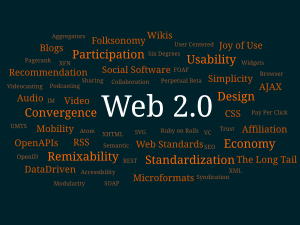 Image via Wikipedia
Image via WikipediaThe newer generations of distance education are still working concurrently with the earlier generations, Anderson suggests. As such, designers, developers and educators are challenged to enhance learning and teaching opportunities by increasing access to quality learning contexts and opportunities.
Motivation, structural support and cognitive skills are key in distance education where the group, network and collective aspects (the unconscious aggregation of activities of all of us) of learning can be foregrounded. The connectivist tools (over 3,000 of them) are wide-ranging and are based on Web 2.0 (check some of them out on the Go Web 2.0 site). The sheer range may offer an insight into why some education practitioners choose to use an LMS - the choice is just overwhelming.
Terry Anderson gave a range of examples from Athabasca, including using ELGG to build a social networking community, as well as using podcasts, vodcasts, and screen casts. Some of the most concerning issues raised were around using the connectivism model were privacy, control, dealing with disruptive change, institutional support, and sustaining motivation and commitment to avoid running after fads all the time.
The thing I found most interesting about this presentation was the recognition that there is still a combination of all generations of distance education, with the inference that many educators and institutions are still working with earlier models. Also, Anderson closed by posing the question: "which type of student is most engaged by each generation?".
![Reblog this post [with Zemanta]](http://img.zemanta.com/reblog_a.png?x-id=9044d049-67ff-475b-9fab-febbb41ad910)





No comments:
Post a Comment